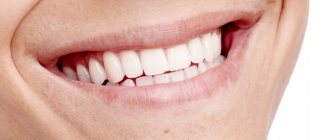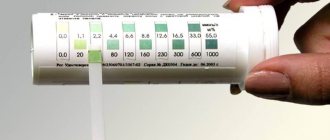For pulpitis, fistula or deep caries, several stages of therapy are often required, so the dentist uses temporary (intermediate) filling.
Temporary filling is used in two cases: during diagnosis and during treatment. For example, a doctor needs to find out whether the nerve is damaged, then they carry out a diagnostic filling and later, if the tooth does not start to hurt, they fill it permanently.
When the dentist applies a medicine that needs to be left in the crown of the tooth for a while and isolated from contact with the external environment, then a temporary filling is also used. At the end of the treatment period, the medication is simply removed and replaced with a permanent filling.
Why is temporary filling needed?
The need to use filling material is determined by the dentist. The installation of a temporary filling is prescribed by a doctor in the following cases:
- Carrying out diagnostics. When treating a patient with deep caries, a specialist is not always able to determine the extent of tissue damage. The doctor cleans the tooth cavity and places filling material. If the neurovascular bundle is not inflamed, then after the procedure the person will not experience pain. If the dental nerve and surrounding tissues are damaged, preliminary treatment will be required.
- Removal of the neurovascular bundle. In some cases, nerve sacrifice is required before removal. To do this, the dentist puts a specialized paste into the tooth cavity. After a certain period of time, the specialist removes the pulp and fills the tooth cavity with permanent filling material.
- Dental prosthetics. The dentist prepares teeth for prosthetics. To ensure that the root canals are protected from food and pathogenic bacteria during manufacturing, the specialist places a temporary filling material into the tooth cavity.
- Treatment of diseases. After treatment, the dentist places medications into the tooth cavity. After a certain period of time, the specialist removes the temporary filling and installs a permanent filling.
Causes
This situation appears under the influence of various factors. Common causes of burning, unpleasant taste and bitterness in the mouth:
- Low quality medicines. Some specialists, in order to reduce the cost of their services, use cheap materials and products that have an unpleasant taste. Therefore, it is necessary to first check with a specialist what materials he will use in his work.
High-quality medicines show less symptoms
- Allergic reaction. Allergies to mucous tissues can occur to medications and filling materials. A person feels swelling of the mucous tissues, discomfort and that the mouth smells like medicine. You can only figure out what caused this problem with the help of a qualified specialist. The doctor will identify the allergen and take measures to eliminate it. You should not self-medicate with antihistamines. Because if a reaction occurs to the filling material, the problem will go away on its own after the filling is removed.
- Sores on mucous tissues. Microtraumas often occur in the oral cavity during therapeutic procedures. An infection gets into the wounds and the inflammatory process and stomatitis begin to develop. With herpetic stomatitis, bubbles with liquid appear, which increase in size, burst and erosions appear in their place. There is a burning sensation and pain in the oral cavity.
- An unpleasant aftertaste of medicine in the mouth after dental treatment and bitterness occur if the installed permanent filling does not cover the tooth airtightly. In such a situation, other unpleasant symptoms may occur: tooth sensitivity and pain.
- Sometimes the problem appears when a temporary filling is installed. Most medications and antiseptics used in dentistry have a specific and unpleasant taste. Therefore, it is normal to feel a taste of the medicine for several days after dental filling.
Sometimes an unpleasant aftertaste of medications may appear several years after dental treatment.
Amalgam filling adds a metallic taste
This happens when a filling cracks or comes off. In this case, over time, toothache will appear, and the tooth itself will decay. Therefore, you need to regularly visit the dentist in order to promptly identify dental problems and eliminate them.
Material requirements
To install a temporary filling, a specialized material is used that can be easily removed by the dentist if necessary. The composition for temporary filling must meet the following requirements:
- X-ray resistant. To check the correctness of the filling, the dentist prescribes an x-ray examination. The image allows you to timely identify the presence of cracks in the filling material and eliminate them.
- Good grip on the surface. It is necessary to exclude the formation of microcracks or incomplete adhesion of the material to the tooth tissue. Violation of this rule may result in medication entering the oral cavity.
- Elasticity. The material should easily fill the pores formed in the tooth tissue.
- Strength. The material is installed by the dentist for a certain period of time. When eating, the filling is subjected to high stress. In this regard, the seal must be resistant to mechanical damage.
- Harmlessness. The filling should not cause allergic reactions or negatively affect human health.
- Easy to remove. At your follow-up appointment, the doctor quickly removes the temporary filling.
A mandatory requirement for temporary material is a high curing speed. The filling completely hardens in 2 – 3 hours.
Symptoms
After filling teeth, an unpleasant bitter taste and even a burning sensation may appear in the mouth. Sometimes the taste and smell of the medicine can be felt not only by the person himself, but also by the people around him. As a result, self-doubt and problems communicating with other people are added to the main problem. Unpleasant sensations in the mouth significantly impair the quality of life. People with an increased gag reflex cannot even drink or eat.
Many people are afraid of this situation due to the fear that the installed filling is leaking and leaking the medicine that is under it.
But this is an erroneous opinion and has no basis. Therefore, before you give in to panic, you need to figure out why the problem appeared and take measures to eliminate it.
Temporary filling always leaves a taste in the mouth
What can happen after installing a temporary filling?
In some cases, patients experience pain after placing temporary filling material into the tooth cavity. Mild pain during the first 5 days after the intervention is considered normal. If pain intensifies, you should immediately consult a doctor. Violation of this rule can lead to the development of various diseases and tooth loss.
It is normal to have a smell or taste of medication in the mouth after the procedure. The sudden appearance of a strong smell or taste of medicines indicates depressurization of the filling and leaching of medicines with saliva from the tooth cavity. Some drugs, if they enter the oral cavity, can have a negative effect on the human body. If such signs appear, you should immediately contact a specialist.
Swelling of the gums, darkening of tooth enamel, and the appearance of bad breath indicate the development of diseases. If symptoms appear, you should contact your dentist immediately. The doctor will remove the filling material and carry out diagnostic measures. You may need to contact your dentist if the filling breaks. Failure to visit a specialist in a timely manner will result in food particles and bacteria entering the tooth cavity.
Discomfort and inconvenience after installation of a filling
Immediately after a filling, the cause of discomfort in the mouth may be the lack of treatment before the filling is placed, and having a healthy tooth can create an unusual feeling of something new.
discomfort conditions of a filled tooth are a reason to urgently consult a doctor
- Foreign body sensation requires diagnosis to determine the origin of the discomfort. If you ignore such a symptom, there is a possibility of developing more complex inflammatory processes.
- A feeling of roughness and scratching indicates insufficient polishing of the filling. The defect is quickly eliminated with a second visit to the doctor and additional polishing to a comfortable state.
- An incorrect bite indicates an incorrect formation of the shape of the filling, which is measured in fractions of millimeters. The reason for this situation is the fact that anesthesia, which continues for some time after the filling procedure, does not make it possible to fully feel the shape of the tooth. Numbness of the jaw under the influence of anesthetics makes it difficult to report the presence of discomfort in the dentist’s office immediately after the filling is installed. The shape of the filling is quickly corrected by filing during a second visit to the doctor.
- A tightening tension in the jaw, a feeling of pressure inside the filled tooth, and discomfort when closing the teeth are created by an oversized filling. This is caused by increased pressure on the tooth walls and nerve endings. Possible consequences range from microdestruction of the dental wall to bacterial inflammation, from malocclusion to diseases of the temporomandibular joint.
- An incorrectly shaped filling can also create additional trauma to the oral mucosa when wearing orthopedic structures.
- Some time after the filling is installed, an increased reaction to irritants even without them (sour, cold, etc.) goes away with the correct selection of paste and other means. A sensitive reaction can be triggered by overdrying of the dentin during filling or loss of tightness of the filling material. To get rid of unpleasant sensations, the intervention of a doctor is necessary.
- Uncomfortable sensations during eating and the entry of food particles into the interdental spaces require the restoration of the interdental contact point, which determines the anatomical correspondence of the filled tooth with the rest of the teeth.
- An allergy to the components of the filling material is sometimes accompanied by bitterness in the mouth, pain, and skin reactions: itching, rash. In such a situation, the filling is replaced with a material that does not cause an individual reaction.
Dental specialists at Die Hard will individually consider the causes of discomfort after installing a filling and eliminate them, providing you with the comfort of healthy teeth. Dentistry in Moscow will cope with even the most complex inconveniences that appear after filling.
How long can you walk with a temporary filling?
The material used for temporary filling is highly durable. The filling does not break down for a long time. The specialist determines the period of wearing temporary filling material based on the nature and degree of neglect of the disease. The duration of wearing the filling is individual for each patient.
At the end of the established period, the person must immediately contact a specialist. An increase in the time period can lead to the development of diseases. In some cases, the filling may crumble at the end of its period, and the drug will negatively affect the patient’s body.
Problems when wearing temporary dental fillings
Sometimes it happens that a temporary filling is too soft, then it needs to be changed so as not to disturb the chewing process. It happens that a temporary filling crumbles, tastes bitter, has an unpleasant taste in the mouth, or the tooth hurts when pressed - these are also reasons for premature removal. But the most dangerous situation is when the filling falls out. If you have any concerns about filling, you should contact your dentist.
Cementing with arsenic is becoming less common due to the unsafety of this method. Light-curing pastes dry instantly, have a natural color and do not harm the body, and they can be installed for 15-20 Euros.
You can get even more information at a free consultation at dental clinics in Estonia, a full list of which is presented on our website.
Types of temporary filling depending on the material
The material used to install a temporary filling is non-toxic, environmentally friendly and does not pose any danger to the body. At the same time, it is quite plastic, can occupy any volume, and has the property of rapid drying.
Depending on the practical application, a temporary filling may contain different compositions, in particular:
- Artificial dentin.
It is the most common substance for making temporary fillings. It contains zinc oxide and kaolin. For quick hardening (up to 3 minutes) mix with a small amount of water.
- Dentin pastes.
Slightly increased hardening time of the substance due to the fact that essential oils are used instead of water (as in the case of artificial dentin).
- If there is a need for temporary filling of dental canals, a mixture of Karyosan is used.
- For pain relief
and relieving the inflammatory process, solutions based on zinc-evengel cement are effectively used.
Materials for temporary fillings and operating nuances
The performance characteristics of a temporary filling allow the patient to maintain the usual quality of life for the entire period of its use. Moreover, despite the high adhesion to tooth tissues, it is quite easy to remove when the time comes to move on to the next stage of treatment.
Cement components are used as temporary filling materials, such as:
- artificial dentin, made from zinc sulfate and white clay;
- Vinoxol containing zinc oxide;
- Karyosan, which has additional anesthetic properties, etc.
All these compositions, after hardening, are able to withstand the chewing load, are plastic, and are safe for health. When choosing a composition, the doctor proceeds from the time frame for which the temporary filling is installed. For example, fillings made from Vinoxol can last up to six months.
What is a temporary filling
The main function of a temporary filling is to prevent pathogenic oral flora from entering the tooth cavity at an intermediate stage of treatment. Also, with the help of a temporary filling, a hole in the tooth is isolated when potent compounds are placed in it to kill the dental nerve.
The installation of a temporary filling is always preceded by preliminary treatment of the diseased tooth: opening the dental cavity, removing dead tissue, cleaning and antiseptic treatment of the resulting cavity. Installing a temporary filling allows the patient to wait for the next stage of treatment without reducing the quality of life.










